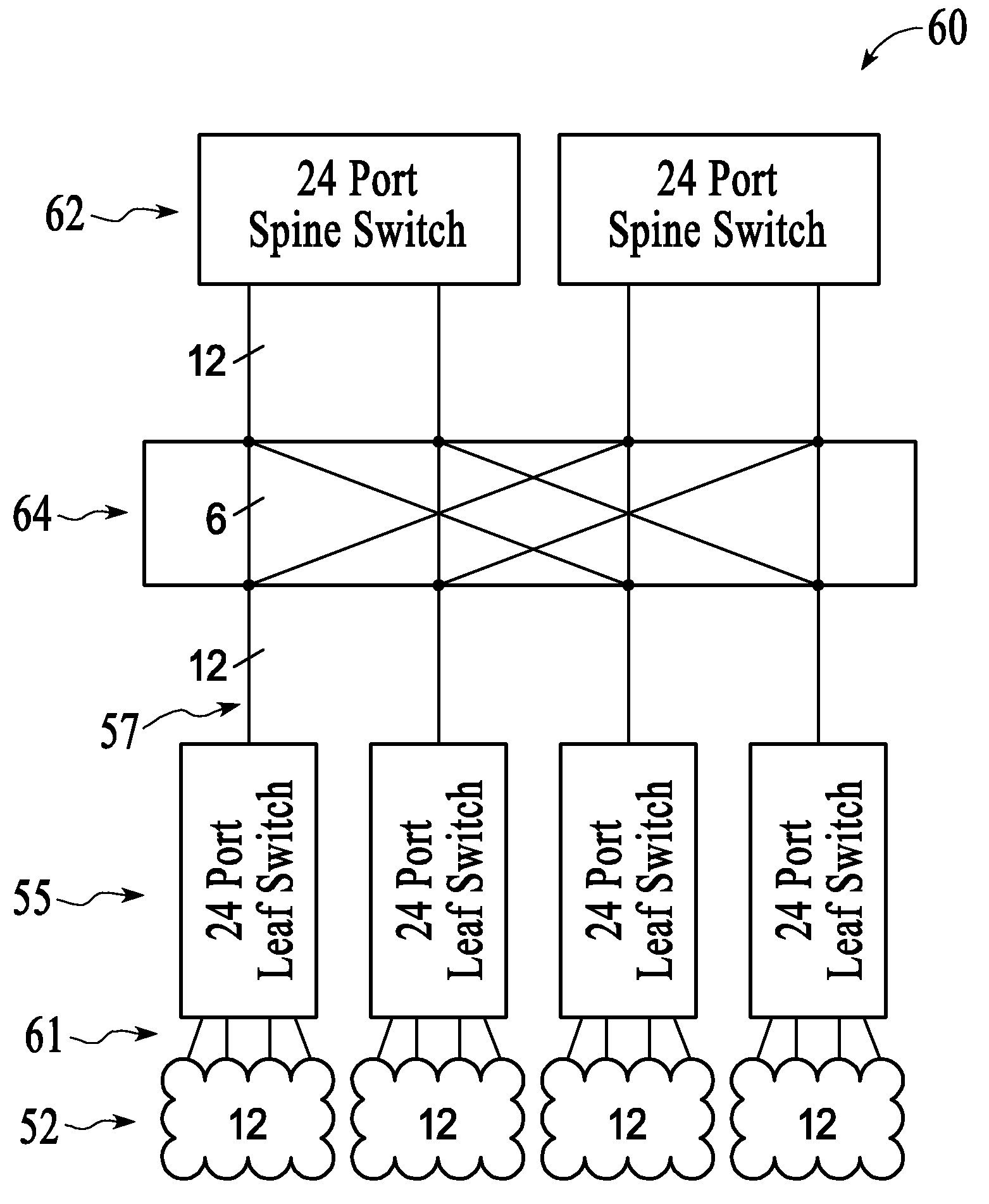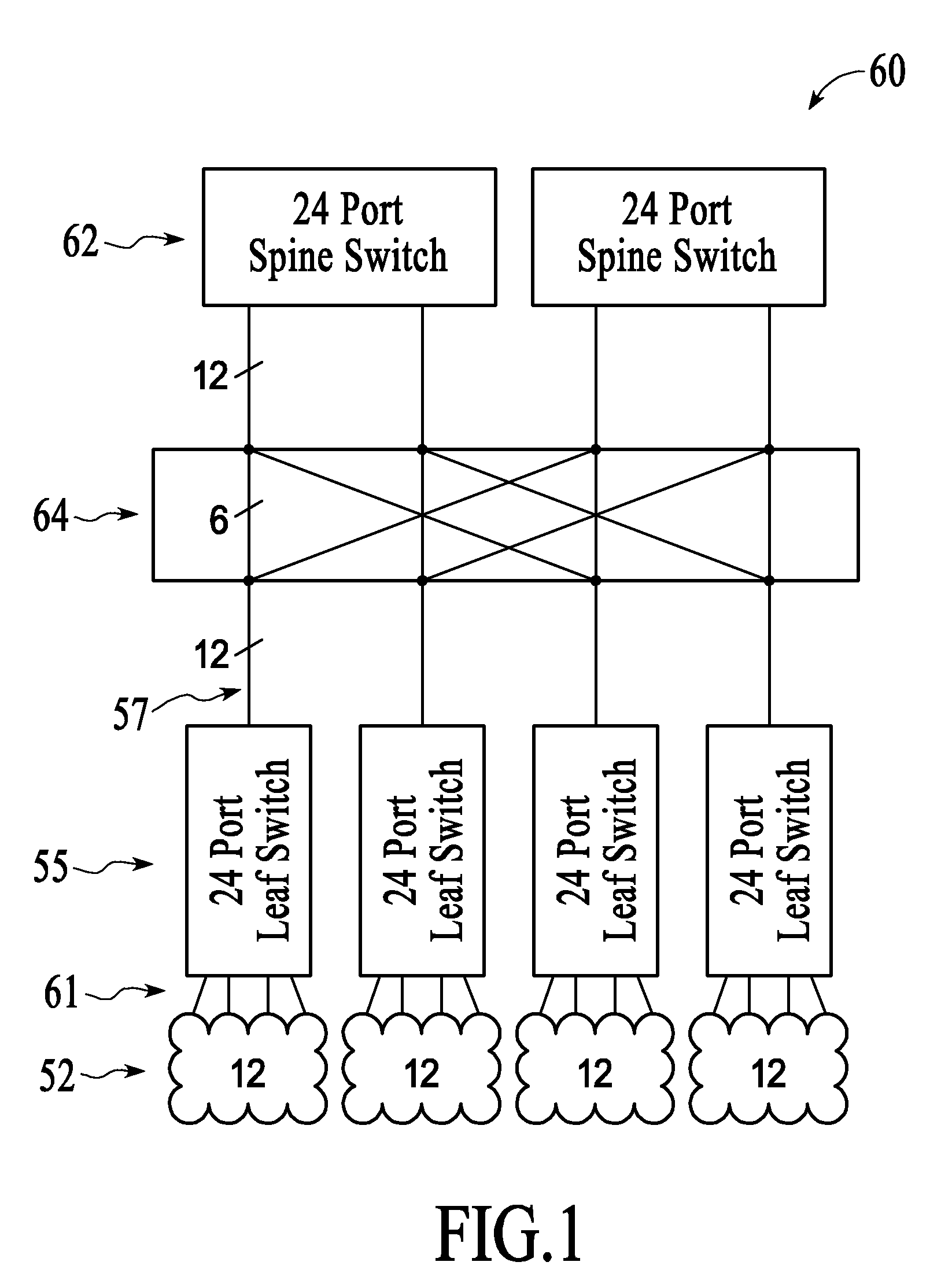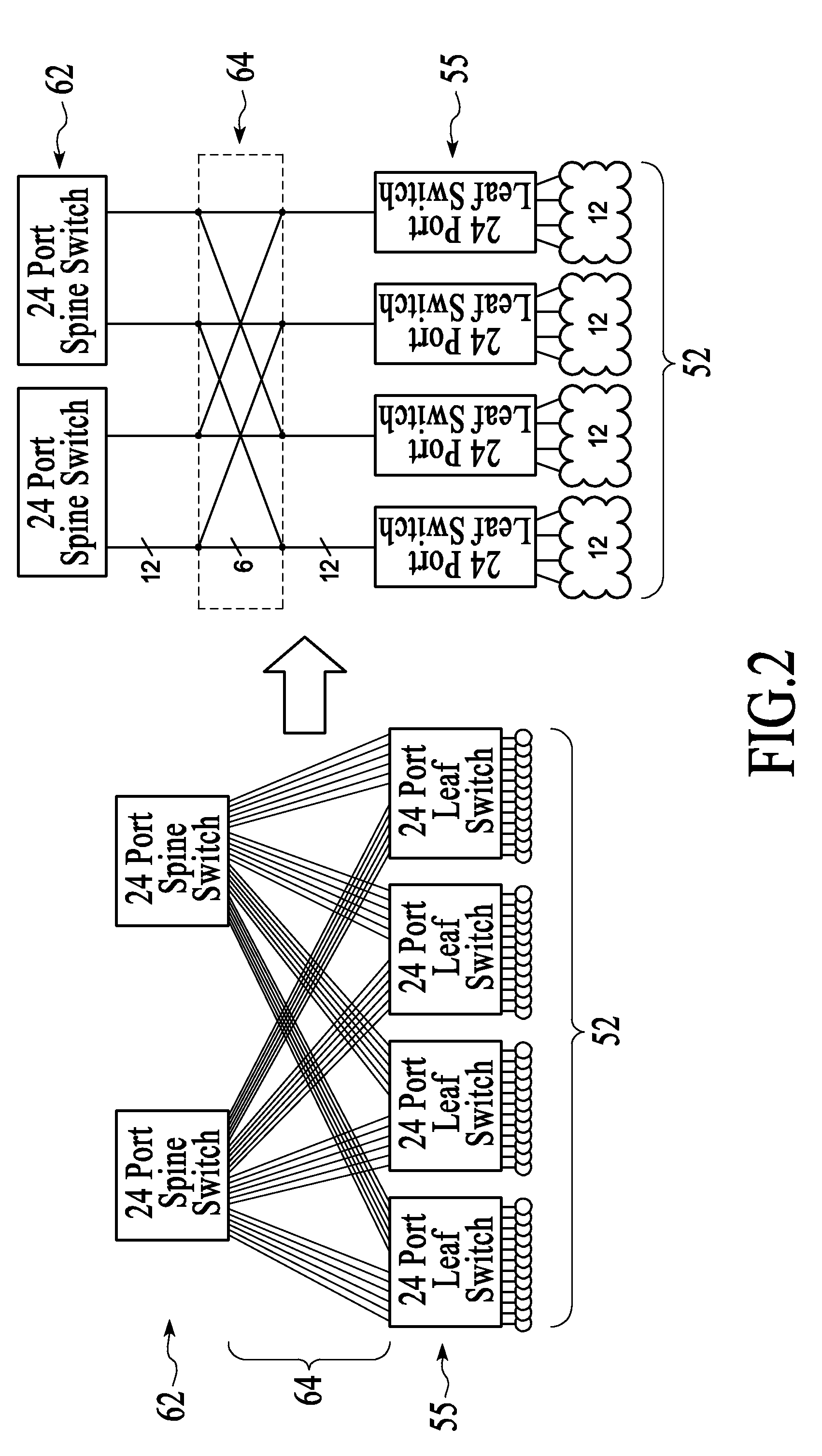Optical Network for Cluster Computing
a cluster computing and optical network technology, applied in the field of optical networks and cluster computing, can solve the problems of limited transmission speed, high installation and management cost of conventional systems, and ultimately limited scalability of these systems
- Summary
- Abstract
- Description
- Claims
- Application Information
AI Technical Summary
Benefits of technology
Problems solved by technology
Method used
Image
Examples
Embodiment Construction
[0017]Embodiments of a multi-node optical computing cluster are described below. The multi-node optical computing cluster, also referred to herein as a cluster or optical computing cluster, provides numerous computing nodes connected to leaf ports in a two-stage network with a folded Clos topology. The network includes any number of nodes (e.g., 48, 96, 288, etc.) and further scaling is possible under the embodiments herein, for example, clusters using the network structure of an embodiment can be built having thousands of nodes. Furthermore, the network has full bisectional bandwidth. The network elements are distributed among the computing nodes, thereby allowing for aggregation of the network uplinks from the leaf switches to the spine switches. The denser uplinks allow for simplified cabling, and the node links and uplink ports share a common physical layer for flexibility in configuration. Consequently, the cluster network structure of an embodiment is scalable while maintainin...
PUM
 Login to View More
Login to View More Abstract
Description
Claims
Application Information
 Login to View More
Login to View More - R&D
- Intellectual Property
- Life Sciences
- Materials
- Tech Scout
- Unparalleled Data Quality
- Higher Quality Content
- 60% Fewer Hallucinations
Browse by: Latest US Patents, China's latest patents, Technical Efficacy Thesaurus, Application Domain, Technology Topic, Popular Technical Reports.
© 2025 PatSnap. All rights reserved.Legal|Privacy policy|Modern Slavery Act Transparency Statement|Sitemap|About US| Contact US: help@patsnap.com



